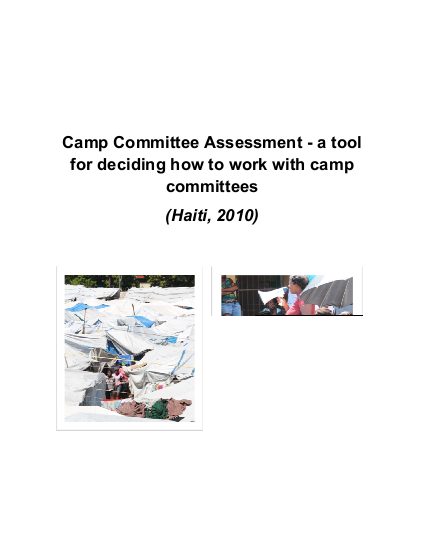
As a result of the 12th January 2010 earthquake 2.3 million people were displaced resulting in over 1300 camps, with 1.6 million residents. The camps vary in terms of size (from a few tents to up to 50,000 people); how they were formed (while some were planned the majority formed spontaneously after the earthquake); and level of support and management from NGOs and agencies (it is estimated that around 30% have camp management agencies). A factor common to many camps, however, is the presence of some form of camp committee, or as in the case of some camps, multiple camp committees.
As in all contexts, NGOs and aid agencies are accountable to a number of different stakeholders, but in particular to those women, men, girls and boys they are seeking to assist. In brief, accountability can be defined as the means through which power is used responsibly. It involves taking account of, and being held accountable by, those affected by the emergency. For humanitarian organisations, accountability to affected-people helps programmes to meet people’s needs, and reduces the possibility of errors, abuse and corruption. This results in more effective and better quality programmes, and enables organisations themselves to perform better.
The HAP 2007 Standard in Humanitarian Accountability and Quality Management, was adopted in 2007 to define in more detail what accountability means in practice, and identifies what matters most in the way agencies work with affected-communities. In assessing how, following the earthquake in Haiti, agencies could strengthen their accountability, the camp committees were identified as playing a key role.
This tool can be used in both rural and urban, camp and non-camp situations to engage with affected populations.
Resource collections
- Accountability to affected populations (AAP)
- Evaluating humanitarian action
- Topics
- UN Habitat - Urban Response Collection
- Urban Response - Urban Crisis Preparedness and Risk Reduction
- Urban Response Collection - Community Engagement and Social Cohesion
- Urban Response Collection - Economic Recovery
- Urban Response Collection - Environment and Climate Change
- Urban Response Collection - Housing, Land and Property
- Urban Response Collection - Urban Crisis Response, Recovery and Reconstruction
- Urban Response Collection - Urban Resilience
